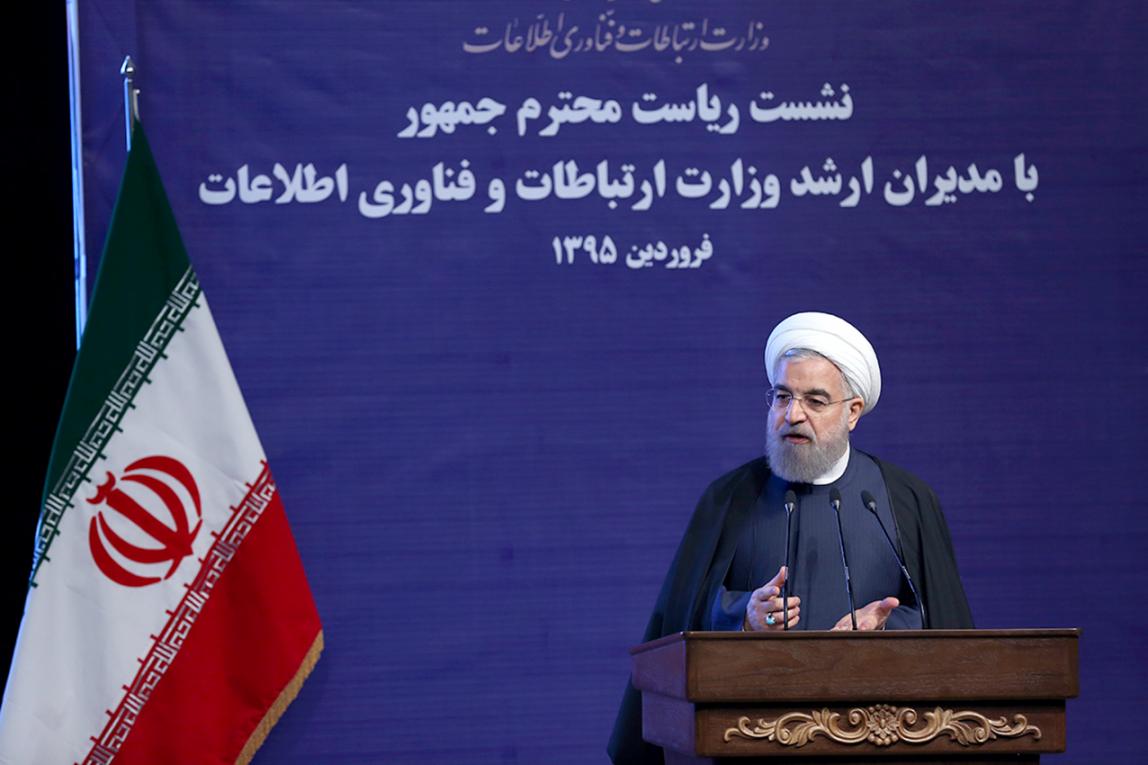Non-oil exports outweighed imports in the last Iranian year (March 2015-16), marking the country’s first-ever positive trade balance since the 1979 Islamic Revolution, said President Hassan Rouhani on Monday.
“Daily exports of crude oil and gas condensates rose by 2 million barrels and the figure is bound to increase in the new Iranian year,” IRNA quoted Rouhani as saying.
The president also predicted that Iran will reclaim its share of the global energy market this year.
According to the latest figures released by the Islamic Republic of Iran Customs Administration, a $916 million trade surplus was registered last year.
A total of $42.41 billion worth of goods were exported during the period, posting a 16.11% decline compared with the previous year’s corresponding data.
Meanwhile, imports stood at $41.49 billion, which shows a 22.53% decrease.
Two years ago, non-oil exports stood at $49.7 billion, recording an 18.87% increase compared with the preceding year's corresponding figure, while imports reached $52.4 billion to mark an increase of 5.5%.
Last year's figures also show that exports and imports reached 93.52 million tons and 35.07 million tons in terms of weight respectively, registering a 7.18% and 18.47% decline compared with the year before.
The average price of a ton of exported goods rose 1.22% to stand at $461, whereas the price of a ton of imported commodities averaged at $1,183, posting a 5% drop. This shows a rise in the import of raw materials.
The 52.42% fall in the export of natural gas condensates had a significant impact on the decline of non-oil exports.
The export of petrochemicals and other goods saw a slight drop of 2%. Exports chiefly included petroleum gases and hydrocarbons (4.4% of total exports), liquefied propane (3.98%) and bitumen (3.47%).
Imports mostly comprised field corn (3.39% of the total imports), wheat (2.09%), soybean (1.75%), rice (1.64%) and soybean meal (1.62%).
China, Iraq, the UAE, Afghanistan and India were the biggest export destinations in a descending order.
Last Iranian year saw the share of the UAE and Afghanistan from Iranian goods increase, although China’s imports from Iran registered a more than 23% decrease compared to the year that ended on March 20, 2015.
Main exporting countries to Iran were China, the UAE, South Korea, Turkey and Switzerland while the import of Chinese goods showed an 18% decline. Figures also show that Switzerland’s share of Iran trade rose by 5% whereas the UAE’s imports fell by 36%.
Auto imports registered a 42.8% decline last year to reach $1.23 billion. The number of imported passenger cars dropped from 103,918 in the year ending March 20, 2015, to 51,522 in the preceding year, thanks to the ban on the import of cars with an engine displacement of over 2500 cc.


